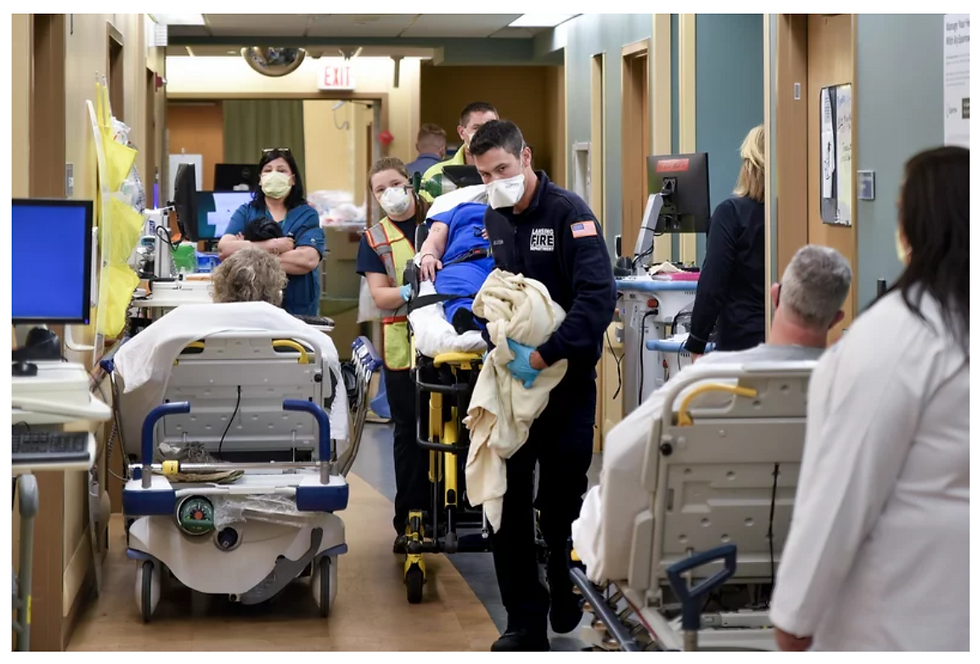2020 in Review, but 2021 is a Year of Change
- Joe Ebberwein

- Jan 19, 2021
- 3 min read
Updated: Feb 2, 2021
Author: Joseph Ebberwein, Co-Founder and CFO, Corstrata, Inc.

January brings a time of reflection for the previous year’s learnings and changing behavior to meet goals for the New Year. Of course, 2020 will go down in the history books as one with multiple events producing worldwide ramifications. Some wish that the word “unprecedented” could be retired from the vernacular. And yet, there are always glimmers of hope as evident in examples of the human spirit and the desire to bring hope out of despair.
As we reflect on healthcare in the United States in 2020, certainly the delivery system was pushed to the brink of collapse in some areas of the country as Emergency Rooms and ICUs filled with patients in distress with Covid-19. While attention was focused on this population with the most critical need, others with serious chronic illness went without treatment, either due to lack of access to clinical staff or out of fear of contracting the illness. Outpatient wound care centers located on hospital campuses were deemed “non-essential” and volumes of ambulatory visits decreased dramatically. Incidences of worsening chronic wounds and the devastating results (increased amputations, etc.) will burden our healthcare system for some time to come.
For some, very needed changes in the system have now emerged. Telehealth utilization is now a part of the system, thanks to the relaxed restrictions and emergency reimbursements. As well, non-traditional modes of communication (Zoom, FaceTime, etc.) have vastly improved access and readily accepted. Combined with physician license requirements being relaxed in order to facilitate increased access to care for some of the most vulnerable populations of chronically ill patients, shining the light on Telehealth has brought change.
For home health, 2020 was anticipated to include the adoption of the radically new Medicare reimbursement model of PDGM, with wound patients having the highest revenue potential. Instead of being able to focus on these changes, home health agencies experienced a decline in patients due to the fear of contracting COVID-19. Additionally, reductions in non-COVID-19 hospital census and planned surgeries caused a decline in home health referral volumes. Federal assistance to agencies helped, but now 2021 brings the reconciliation of those payments as well as new potential penalties associated with the timing of billing RAPs (Request for Anticipated Payment). It is anticipated that 2021 will bring much consolidation in the industry as smaller to mid-sized agencies deal with decreased business and other economic pressures.
Many agencies continued with their 2020 strategic imperatives, even in the midst of trying times. Increased utilization is just now showing signs of emerging. PDGM and its preference for Wound Care allow new home delivery models. Innovations, such as Hospital-to-Home and SNF-to-Home, offer ways to serve patients and families at lower risk. Corstrata, as a Telehealth Wound Model supporting clinicians in their work, is finding its place in 2021. Wound Programs of Excellence and strategies for tech-enabled access to wound specialists will improve clinical outcomes at a lower cost and benefit the bottom line.
Corstrata not only experienced a 50% growth in wound care and ostomy consult volume as compared to 2019, but there were key learnings in working with our home health and hospice providers:
Technology advancements allow for efficiencies in wound documentation, but do not produce desired clinical and financial outcomes without having access to clinical wound expertise to drive evidence-based care.
With national error rates in wound etiology identification as high as 30%, it is imperative that agencies have access to specialists that can properly identify and document etiology and staging.
Formulary design is key to optimizing clinical and financial outcomes. Working with wound specialists to streamline formulary and introduce advanced dressings that extend wear time reduces the number of necessary in-home visits.
Innovative care delivery models, including the use of PTs and LPNs to support wound care, can increase efficiencies in the overall wound patient management.
2021 promises to be both challenging and ripe with opportunities for those providers who embrace change and innovative solutions to improve their agencies and the lives of the patients that they serve.
About Corstrata
Corstrata enables Post-Acute Providers to become Wound Programs of Excellence with our wound consults for the management of complex & chronic wounds for providers in home health, hospice, rehab hospitals, and nursing homes.
Our senior-level, wound-certified nursing team comprises some of the best and most experienced in the industry. We couple their knowledge of the most advanced wound dressing technology, latest evidence-based research, and our Telehealth infrastructure to ensure that we deliver the right patient support at the greatest point of need – the bedside.
To learn more, contact Corstrata for a conversation to see how we can help make your wound management program easier and more profitable.




Comments